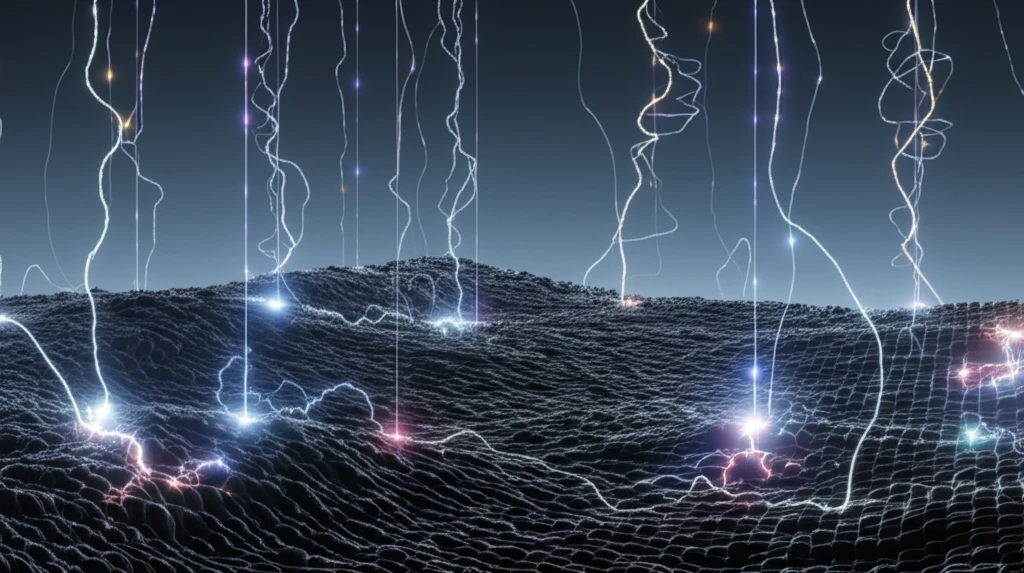
Tiny Titans of Tech: How Nanoscale Electron Emitters Are Revolutionizing Modern Technology
"Unlocking the potential of cold field electron emission for brighter displays, sharper microscopes, and beyond."
In today's rapidly advancing technological landscape, breakthroughs often come in the smallest of packages. Cold Field Emission (CFE), a process involving the emission of electrons from a material under the influence of a strong electric field, is one such innovation. Contributing significantly to technologies like electron microscopes and field-emission displays, CFE is also pivotal in the evolution of vacuum nanoelectronics and even impacts our understanding—and prevention—of vacuum breakdowns. But what makes CFE so compelling, and how is it reshaping the future of technology?
At its core, CFE offers a unique way to generate electron beams without relying on high temperatures. This is particularly important because it allows for more precise control and energy efficiency, crucial for applications requiring high resolution and minimal thermal disturbance. The underlying theory, rooted in Fowler-Nordheim (FN) tunneling, allows electrons to escape from the surface of a material when an electric field is applied. The key to understanding and optimizing this process lies in the careful characterization of the materials and their emitting surfaces.
One critical parameter in CFE is the emitting surface area, which directly impacts the lifespan and stability of electron sources. Recently, it's been discovered that the notional area of emission—the effective area from which electrons appear to originate—plays a crucial role, especially in emitters with larger diameters. This realization has sparked a need to deeply understand how this notional area depends on various physical and geometrical parameters. This article dives into the groundbreaking research analyzing how these parameters affect the efficiency and brightness of CFE arrays.
Understanding the Notional Area in Cold Field Emission

Recent studies, like the one from Amorim et al. (2018), focus on unraveling the complexities of the notional area (An) in CFE, particularly within arrays of emitters. These arrays, often modeled as a hemisphere on a cylindrical post (HCP), are suitable for simulating carbon nanotubes or nanofiber-like emitters. The aim is to determine how An is affected by key factors such as the separation between emitters, aspect ratio, radius, local work function, and macroscopic emission current. This kind of deep dive provides insights into maximizing the performance of electron sources.
- Emitter Spacing: The distance between HCP emitters significantly impacts the electric field distribution and, consequently, the notional area.
- Aspect Ratio: The height-to-radius ratio of the emitters influences the concentration of the electric field at the tip.
- Local Work Function: The energy required for an electron to escape the material’s surface affects the emission efficiency.
- Emission Current: The macroscopic emission current dictates the overall performance of the electron source.
Future Implications and Applications
The ongoing research into cold field emission and the optimization of notional emission areas promises exciting advancements across various fields. Improved electron microscopes can offer unprecedented resolution for scientific research, while more efficient field-emission displays could lead to brighter, more energy-efficient screens. As nanotechnology continues to evolve, the potential applications for optimized CFE sources are virtually limitless. By pushing the boundaries of what’s possible at the nanoscale, we’re paving the way for a future where even the tiniest components can have a massive impact.
